Maretron RIM & SIM, on the N2K frontier
While these screenshots (click’em for full size) are spectacular examples of what Maretron’s new system monitors can do, they are also a bit deceptive. That’s because the underlying sensor technology can scale to much more modest yachts, which don’t need a PC monitoring program like N2KView to use it. For instance the RIM100, or Run Indicator Module, is a little black box that can watch up to six AC or DC circuits, like the nav lights above, and report whether current is running through them, via standard NMEA 2000 messages…
Hence one RIM100–which retails for $299–could mind, say, three nav lights, two bilge pumps, and one engine room blower, and could prompt related info and alarms on any networked screen that’s programmed to display them. A Garmin GMI 10 or Raymarine ST70 could conceivably do the sort of detailed bilge pump cycle analysis we saw in the Blue Sea VSM 422. I’m being quite hypothetical here—heck, I’m not even sure Maretron’s own displays understand circuit run state PGNs yet—but I believe it’s just a matter of programming.
The SIM100, or Switch Indicator Module, is related and possibly even more powerful. As you’ll see, Maretron is even providing optional smoke/heat, high bilge, and motion sensors, though the SIM will purportedly mind up to six switches of most any sort, and in some cases will even know if the underlying circuit is functional. Again, at the moment the only monitoring display system that will definitely work with the SIM is N2KView, but the messages are standard, and therefore aren’t the possibilities unlimited?


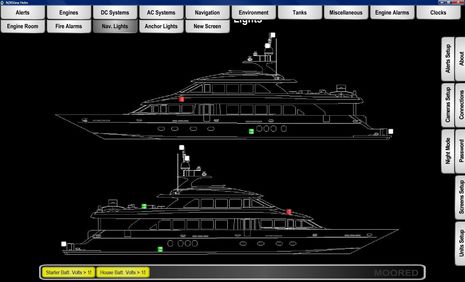
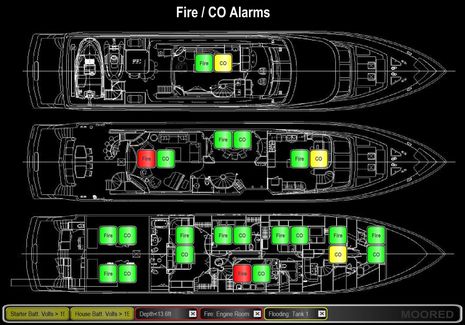
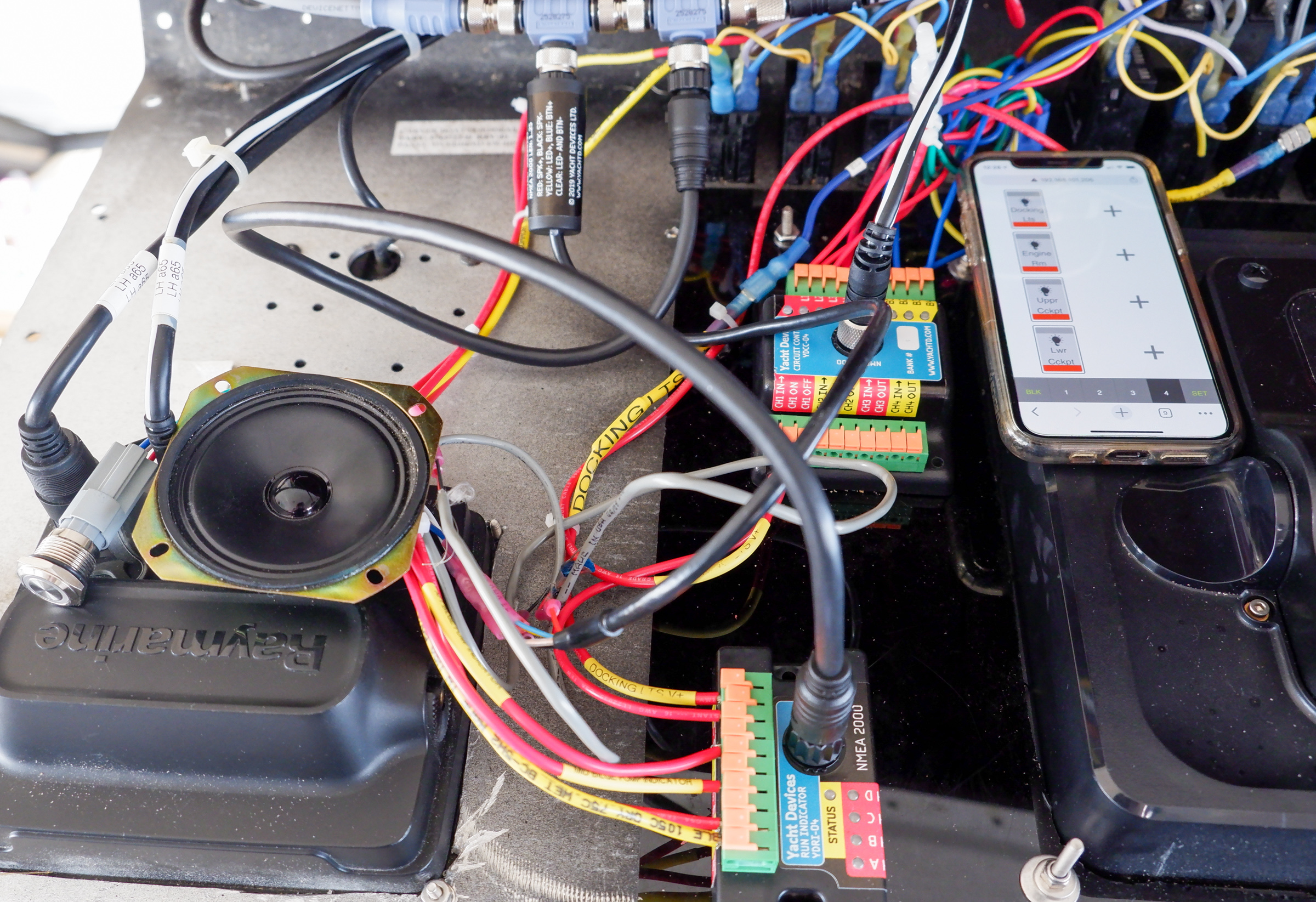
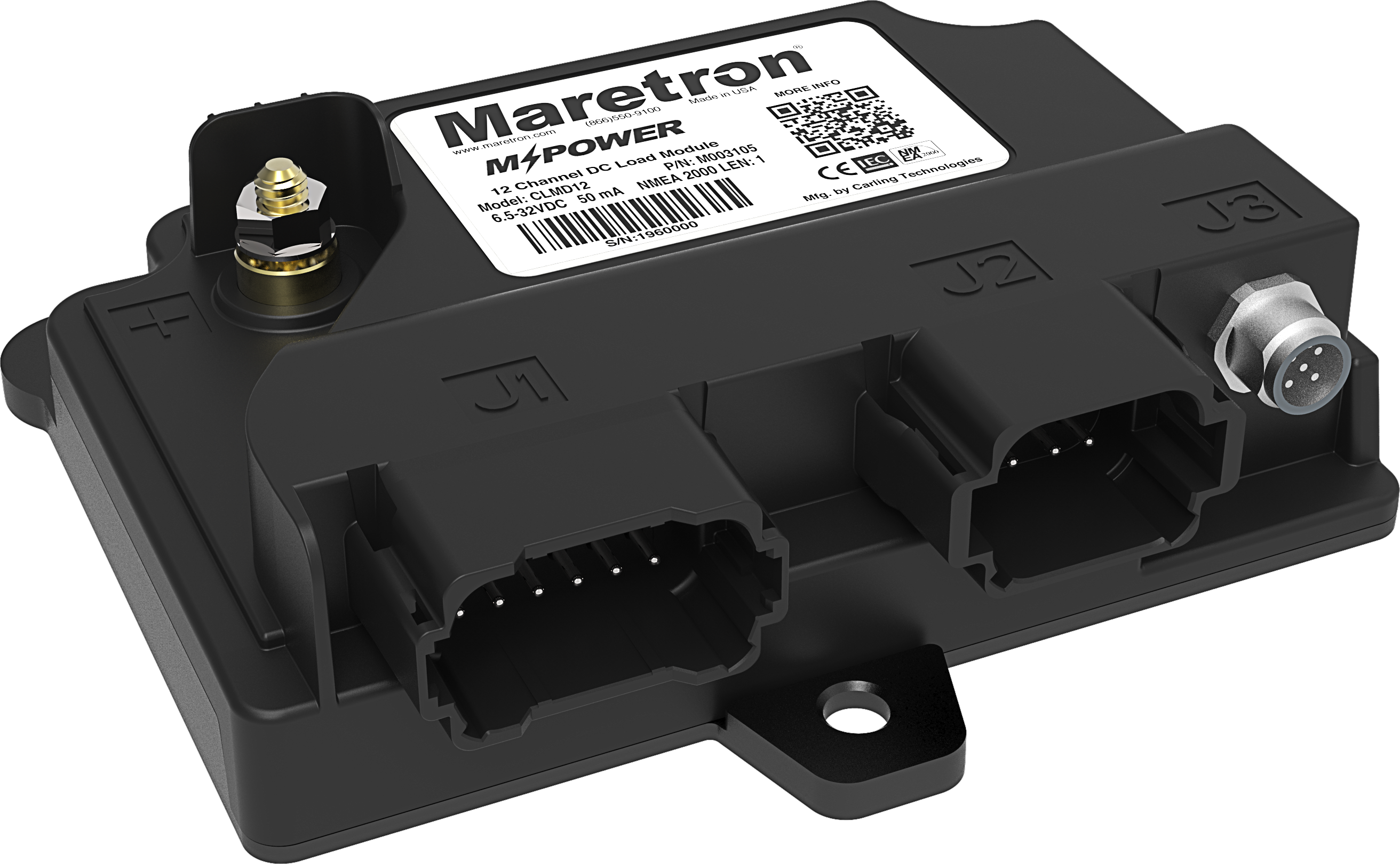
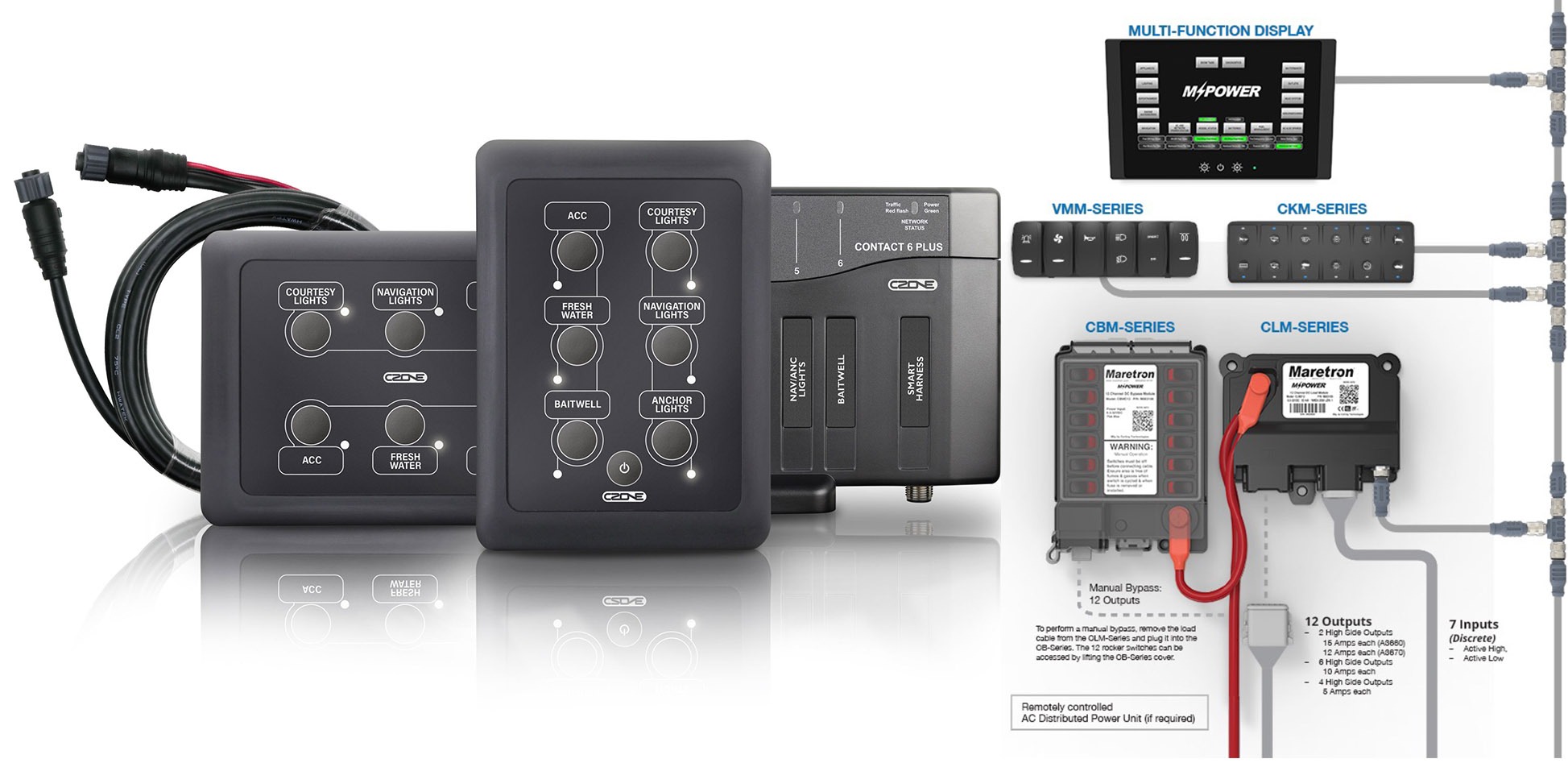
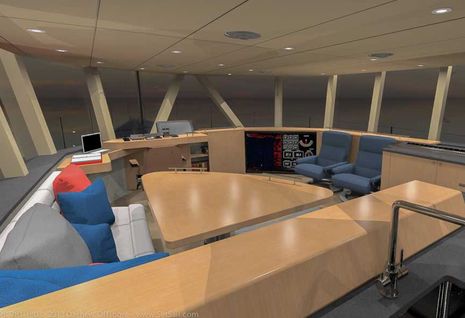







I believe neither of these devices monitor current, which could, for example, detect a failed bulb in a navigation light. Rather, they sense circuit status, on or off, open or closed.
MT
Aha; the latest version of Maretron’s DSM software does understand the Switch Bank Status message (PGN 127501) sent out by both the RIM and SIM. You can label what the switch does and get color code status for the three possible conditions: on, off, and fail. But it will take more programming in the DSM or some other N2K devices to, say, count and alarm bilge pump cycles.
I don’t know for sure, Mark, but note this: “Advanced features of the SIM100 include the ability to detect whether or not power has been disconnected from the monitored device or if the signal wires have been disconnected due to either corrosion, tampering, or for any other reason (if the monitored device is so equipped).”
I too think the possibilities of the SIM, RIM, and TIM (Temperature) added with the ACM and DCM (which uses a coil not a shunt) really begin to show the great features of impressive and expansive N2K networks.
Nigel Calder wrote 3 very interesting articles about what he call the “3-wire” boat (as well as Ben’s April 2006 Article in PMY), in which one controls AC and DC circuit breakers distibuted around the boat via a N2K bus. Carling Technologies, the owner of maretron, also owns Moritz Aerospace, which makes Octoplex, a system that can do this. What is amazing, is that the CEO of Carling, Rick Sorenson, puts his money where his mouth is, his new yacht, a Hargrave 120, is run on Octoplex N2K controls.
As maretron states in thier design guide, there is a 50 device limit to a N2K. I can quickly see this limit causing a problem, with larger yachts having possibly seperate electrical (times 2 in the case of Octoplex), monitoring, and navigation NMEA 2000 networks.
The news is that Sorenson had to do alot of work to get the N2K Octoplex system to work. I think an awesome article for Yachting (or some other publication) would be an interview with Sorenson and or his installers (HINT HINT), background, lessons learned, the power of N2K, the advantages of monitored distributed electrical systems, etc.
Something like that is definitely going to happen, Matt. I’ve not only spent time on Sandrine, but have a “starter” Octoplex system sitting in the lab. Unfortunately, I’ve hardly been in the lab for 2.5 months but that will change after Miami Boat Show.
The RIM100 measures voltage across the load. That the device has voltage applied doesn’t guarantee that it’s actually working.
The SIM100 evidently measures the resistance across a switch to determine if it is open or closed. The advanced monitoring feature works by adding a third option. They supply an 8k ohm resistor to wire across the switch; then “open” indicates a problem.
I thought the Octoplex was very compeling, and tried to get my hands on it in late 2005 for my new sailboat launching in 2006. Looking forward to hearing more
I’ve decided to just roll my own, though it interoperates with N2K. A central Hub (Mac Mini in my case, but any small fanless box would work) talks to a network of little embedded micros scattered around the boat. I seem to have about 15 of them, reporting collected data to the Hub when queried (as well as taking care of local logic where appropriate).
There’s been a lot of interest around this, so I’m publishing the complete design in book form… and also starting an online store to provide parts and kits. Like I’m not already busy enough with the never-ending boat project! *sigh*
My N2K network is independent of this, but there is an interface that allows relevant sensors to contribute data to the ship server. The user-interface side looks like a website and is accessible on- or off-boat, and there are also some “back doors” that don’t require a computer.
I’ll keep you posted on progress, Ben…
Cheers,
Steve
The ability to monitor circuit integrity makes use of a termination resistor. This is the same as most burglar alarm systems. The circuit should always show some continuity, either no resistance when the connected switch is closed, or low resistance (equal to the resistor) when the switch is open. Thus, if the circuit shows infinite resistance, you know that the wiring has a failure (or been cut by a burglar). Note that this integrity monitor can’t be used on a powered circuit, but only on those that are connected to some type of status monitor device (door open, high bilge water, etc, etc).
Mark
I usually refrain from posting comments; however, in this case I can’t resist.
First, I’d like to mention that I find Panbo to be truly enjoyable and informative, and wish to complement Ben for his candor and fairness in reviewing any product. He always honestly presents the “good, the bad, and the ugly”, and frankly, what is most important for a manufacturer/designer to hear is the “bad, and the ugly”. Nothing is ever perfect and improvement is imperative for continued success in the marketplace. (although it may not be too enjoyable to hear!)
Placing a large N2k network on Sandrine with monitoring and control of multiple Moritz OctoPlex and Maretron N2k components has been an extremely worthwhile experience. As OctoPlex operates on two N2k busses for redundancy, we currently are running a total of 72 nodes on “A” bus which includes OctoPlex plus all other N2k nodes, and 41 nodes on “B” bus which connects only to OctoPlex nodes. The NMEA committee guidance of 50 nodes for N2k bus loading is based upon a VERY conservative approach taken by NMEA employing a bus length of 100 meters (330’) and an assumed average level of traffic to be generated by each node. With an efficient layout, the bus lengths on Sandrine are approximately 175’ for bus “A” and 150’ for bus “B”. We have found the average traffic loading of bus A while at the dock to be 5.2% and while underway to be 11%. We have found the intermittent short term high traffic loading for bus A to be approximately 18% while at the dock, and 25% while underway, compared to bus B at 2.5% at the dock and 2.1% while underway. These figures illustrate the low traffic loading generated by the OctoPlex nodes. Also, each individual node on the bus can provide a high quantity of monitoring inputs; for example, there are 8 OctoPlex SIU nodes installed with each providing up to 34 separate monitoring inputs and the system controls a total of 239 AC breaker poles and 280 DC breaker circuits – virtually all lighting is on DC breakers controlled through approximately 175 wall switches controlling signal level circuits to provide on/off/dimming of any desired light groups.
Sandrine has fortunately provided us with a platform where we can intentionally “push the limits”, with the goal to make our NMEA 2000 component installations “bulletproof”. From the beginning, the OctoPlex power distribution system was very stable. Subsequently, with various software beta upgrades and the addition of equipment on the A bus, we did encounter some communication problems on bus A triggered by the interfacing of various components. At one point, we experienced a couple lockups of bus A (while OctoPlex continued to function on bus B). The communication lockups entailed the triggering of bad data transmissions; the sources and reasons were subsequently identified and software modifications were made to prevent such occurrences. Of course, a communication lockup on the bus would be virtually the worst possible occurrence as no data would be able to be accessed or devices controlled.
Maretron is now introducing N2k View with integrated OctoPlex power distribution control and monitoring. Sandrine now has the initial software installation and will be docked in Miami during the Miami Show – an onboard visit may be arranged by visiting the Maretron display booth in the convention center.
Rick Sorenson
Carling Technologies, Inc., Moritz Aerospace, Inc., Maretron LLC
What an honor … thank you Rick for your post, that was so interesting and thought pervoking. I am so gald for the work you, and all your employees, do. Keep it up, and I am glad to see that you read panbo!
I am hoping to install an Octoplex or Capi2 electrical system with Maretron N2K on my 45′ C-Yacht restoration project. I have not been able to find someone to design the system for me as of yet. I need a full system design which would include the AC/DC power layout, Inverter, Battery Bank, Genset and shore power integration. Can someone out there please help?
Hi Wade,
You can contact us for the full system solution you are looking for. We are the producer of the Capi2 bussystem for yachts.
Email me at: [email protected]
Thanks, regards
Tijmen